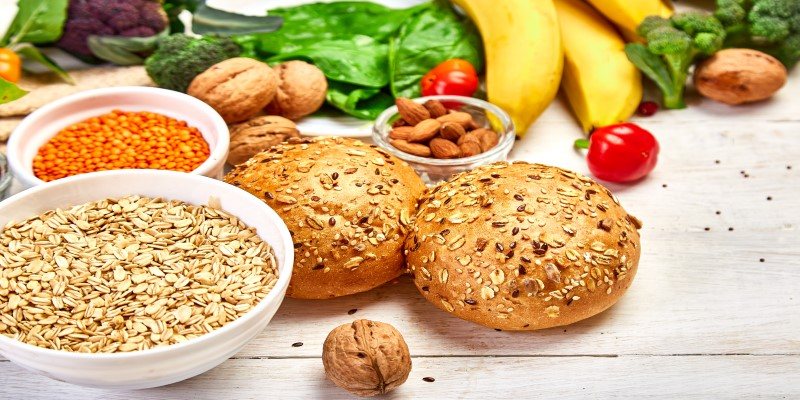Sugars are vital for energy in our diet, with maltose being a lesser-known yet essential contributor. This article delves into the diverse array of everyday foods that harbor maltose, elucidating its significance in our diet. You'll gain insight into incorporating maltose effectively by exploring its common sources.
From grains and cereals to sweeteners and baked goods, maltose is subtly woven into various culinary delights. Understanding its presence and role empowers you to make informed dietary choices. So, whether you're savoring a slice of bread or indulging in a sweet treat, recognizing the presence of maltose adds depth to your nutritional awareness.
Maltose and Its Significance:
Maltose, affectionately known as malt sugar, arises from the bonding of two glucose molecules, forming a disaccharide. Its prominence shines in the world of germinating grains, particularly in brewing. Enzymes, crucial during malting, break down starch into simpler sugars, prominently yielding maltose.
Despite often taking a backseat to sucrose and fructose, maltose significantly influences taste and aroma in culinary endeavors. Its reach extends beyond brewing, subtly sweetening, and adding flavor to many foods, from pastries to snacks.
Despite its unassuming nature, maltose is critical in enhancing our daily dining experiences. Recognizing maltose's significance unveils its multifaceted roles in culinary and industrial realms, showcasing its importance beyond its humble sugar status.
Food Sources Rich in Maltose:
Now, let's get to the heart of the matter where can we find maltose in our diets? While it may not be as ubiquitous as other sugars, maltose is still present in various foods, albeit in varying amounts. Here are some familiar sources:
Grains and Cereals:
Grains and cereals stand out as primary reservoirs of maltose, with barley taking the lead due to its notably high maltose content. Throughout the malting process, starches within barley transform into fermentable sugars, including maltose. This conversion enriches the barley and extends to various breakfast cereals, imparting a delicate sweetness that enhances their flavor profile.
Rice:
Rice, notably rice syrup or malted rice, is a significant maltose source. Like barley, rice undergoes malting to yield maltose. Rice syrup, crafted by enzymatically cooking rice starch, harbors maltose alongside other sugars, making it a prevalent sweetener in processed foods. Understanding these processes illuminates rice's role as a critical contributor to our dietary sugar intake.
Sweet Potatoes:
Sweet potatoes, cherished for their delectable taste, boast a hidden gem: maltose. Through cooking or roasting, the starches within sweet potatoes undergo conversion into sugars, among them being maltose. This natural sweetness elevates the appeal of sweet potatoes, rendering them a versatile ingredient in a myriad of culinary creations, spanning from savory delights to tantalizing desserts.
Breads and Baked Goods:
Breads and baked goods frequently incorporate malted barley flour or malt extract, enriching their flavor profiles. Maltose, a byproduct of the malting process, plays a crucial role in enhancing the browning and aroma of bread. Its inclusion has become a cornerstone in the baking industry, ensuring delightful textures and enticing scents that captivate consumers.
Beer and Ale:
Maltose plays a crucial role in beer and ale brewing, acting as the primary fuel for yeast during fermentation. As yeast metabolizes maltose, it produces carbon dioxide, creating brewed beverages' effervescence and intoxicating aroma. Various beer types' distinctive flavors and mouthfeels are influenced by their differing levels of maltose, showcasing the crucial role of maltose in defining the diverse array of brewing traditions.
Sweeteners and Syrups:
Maltose can also be found in certain sweeteners and syrups, such as malt extract. This concentrated syrup, derived from malted barley, is a staple in brewing and baking industries, adding depth and complexity to beverages and baked goods. Though not as common as other sweeteners, maltose-based syrups offer a unique flavor profile that is highly valued by discerning consumers.
Processed Foods:
Processed foods, particularly those incorporating malt extract or malted barley, frequently include maltose. Snack bars, breakfast cereals, and desserts often leverage maltose for its sweetening and binding qualities. Nevertheless, it's imperative to scrutinize the ingredient list for maltose or its derivatives to make informed dietary choices and monitor sugar intake for optimal health.
Infant Formulas:
Maltose, a natural component of breast milk, furnishes infants with vital nutrients and energy. While some infant formulas integrate maltose as a carbohydrate source, lactose is typically preferred. It's imperative to adhere to pediatrician guidance when opting for infant formulas, ensuring they meet your child's specific nutritional needs for optimal growth and development.

Health Considerations:
While indulging in the sweet side of maltose can be a delightful experience for your taste buds, explore the health considerations associated with this natural sugar is crucial:
Blood Sugar Levels:
Maltose, a disaccharide of two glucose molecules, can influence blood sugar levels. Individuals with diabetes or those monitoring their blood sugar levels should be mindful of maltose intake, as it can contribute to fluctuations in glucose levels.
Moderation is Key:
As with any component of a balanced diet, moderation is essential. While maltose occurs naturally in various foods, excessive consumption of sweetened products or foods high in maltose can lead to an overabundance of sugar in your diet.

Dental Health:
Maltose, like other sugars, can contribute to dental issues if consumed excessively. Bacteria in the mouth feed on sugars, producing acids that can lead to tooth decay. Practicing good oral hygiene and being mindful of maltose-containing foods can help mitigate the risk of dental problems.
Conclusion:
While maltose may not receive as much attention as other sugars, it is crucial in our dietary landscape. It permeates various foods, from staple grains and cereals to sweeteners and syrups. Recognizing its prevalence and managing consumption levels can contribute to a healthier diet.
By being mindful of maltose content, individuals can better balance their intake of sugars, supporting overall wellness. So, whether you're indulging in a hearty slice of bread or unwinding with a refreshing beer, take note of the subtle sweetness contributed by maltose.







